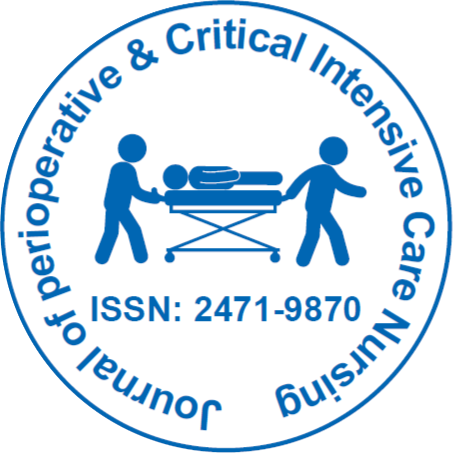
Journal of Perioperative & Critical Intensive Care Nursing
Open Access
ISSN: 2471-9870
+44-77-2385-9429

ISSN: 2471-9870
+44-77-2385-9429
Perspective - (2024)Volume 10, Issue 3
Patient safety is a fundamental principle of healthcare that aims to prevent errors and harm to patients during the course of medical treatment. As the healthcare landscape evolves with advances in technology and treatment modalities, the importance of patient safety remains paramount. This article discusses about the key aspects of patient safety, the challenges faced and the strategies employed to enhance the quality of care provided to patients.
Importance of patient safety
Patient safety encompasses a wide range of practices and protocols designed to minimize risks and prevent adverse events. These events can include medication errors, surgical mishaps, healthcare-associated infections and diagnostic inaccuracies. According to the World Health Organization, millions of patients suffer injuries or death each year due to preventable medical errors. Ensuring patient safety is not only a legal and ethical responsibility for healthcare providers but also a critical factor in enhancing patient trust and satisfaction.
Key elements of patient safety
Several core components contribute to effective patient safety practices. Clear communication among healthcare teams, as well as between providers and patients, is vital to ensuring that everyone involved understands treatment plans, medication regimens and potential risks. Additionally, fostering a culture of safety within healthcare organizations encourages staff to report errors or near misses without fear of retribution, thus facilitating continuous improvement.
Another essential element is the implementation of evidencebased protocols and guidelines. Standardizing procedures for high-risk activities, such as medication administration and surgical practices, helps reduce variability and minimize the chance of errors.
Role of technology
Technology plays an increasingly important role in enhancing patient safety. Electronic health records (EHRs) streamline communication and documentation, reducing the likelihood of errors associated with handwritten notes. Additionally, Computerized Physician Order Entry (CPOE) systems can minimize medication errors by providing clinical decision support, such as alerts for potential drug interactions or allergies. Innovations like Bar-Coded Medication Administration (BCMA) further enhance safety by ensuring that patients receive the correct medications at the right doses.
Challenges in achieving patient safety
Even while patient safety has improved, there are still a number of issues. Many healthcare professionals may hesitate to report incidents due to fear of consequences or a belief that reporting will not lead to meaningful changes. This culture of silence can hinder efforts to improve safety practices.
Additionally, patient safety can be compromised in high-pressure environments, such as emergency departments or intensive care units. In these settings, the rapid pace of care and the complexity of cases can increase the likelihood of errors. Addressing these challenges requires fostering a non-punitive reporting culture and implementing structured communication protocols to ensure that safety concerns are openly discussed and addressed.
Strategies for enhancing patient safety
To enhance patient safety, healthcare organizations can adopt several strategies. First, fostering a culture of safety is essential. Leaders should promote an environment where staff feel empowered to speak up about safety concerns and report errors without fear. Frequent safety exercises and instruction can further support this culture.
Second, it is essential to use data to find trends and areas that need improvement. Analyzing incident reports and safety data can help organizations understand common sources of errors and develop targeted interventions. Furthermore, engaging patients in their own care by encouraging them to ask questions and express concerns can lead to better outcomes and heightened safety awareness.
In conclusion, patient safety is an integral part of delivering highquality healthcare. By prioritizing communication, implementing evidence-based protocols, leveraging technology and fostering a culture of safety, healthcare organizations can significantly reduce the risk of errors and harm to patients. While challenges remain, ongoing efforts to improve patient safety are essential for building trust and ensuring the best possible care for all patients. As the healthcare landscape continues to evolve, a steadfast commitment to patient safety will remain a foundation of effective medical practice.
Citation: Chai L (2024). Ensuring Patient Safety: Key Principles, Challenges and Strategies for Improvement. J Perioper Crit Intensive Care Nurs.10:260
Received: 20-Aug-2024, Manuscript No. JPCIC-24-34554 ; Editor assigned: 22-Aug-2024, Pre QC No. JPCIC-24-34554 (PQ); Reviewed: 05-Sep-2024, QC No. JPCIC-24-34554 ; Revised: 12-Sep-2024, Manuscript No. JPCIC-24-34554 (R); Published: 19-Sep-2024 , DOI: 10.35248/2471-9870.24.10.260
Copyright: © 2024 Chai L. This is an open-access article distributed under the terms of the Creative Commons Attribution License, which permits unrestricted use, distribution, and reproduction in any medium, provided the original author and source are credited.